The day I made 400 Cucidati with my adopted Sicilian family
Three generations and a century of baking Sicilian fig cookies
Every year, around Christmas time, my friend Dawn Casale brings me a package of Cucidati. Have you heard of these before? They are beautiful Sicilian cookies: pale flaky dough filled with fig, fragrant with orange peel, cinnamon, and cloves. Some are dusted in sprinkles, others are golden and bare, cut into spades, flowers, diamonds, oblongs, ovals, and sliced into logs, each flayed open in swirls and swoops, every one unique; like an edible snowflake.
This cookie making has been going on for years; decades really, since Dawn’s grandmother Rosa Fumusa moved to America from the town of Castelvetrano, Sicily, in 1956 with her three children: Lena (Dawn’s mom), Tina, and Frank.
The Cucidati tradition, always on the first Saturday in December, followed them from Sicily to their first home in Bushwick, to Richmond Hill, Queens where the Fumusa children were raised, and finally up to Westchester where Lena moved when she married and began to have her own family: Dawn first, twins Jen and Nicole, then Danielle.
“I remember making them with my cousins and my Aunts in Sicily, at my mom’s house,” Lena told me. “She had the biggest house, and all the women would come over and they would put a rolling board on their laps and roll out the dough on all these different boards. When we moved here, we kept the tradition going.”
Rosa, who was known for her funny and at times provocative cookie shapes, passed away in July of 1987, and in December of that year, Tina and Lena took over the cookie making, inviting their nieces, cousins, and daughters, and eventually their grandchildren to the table. “There are usually around 20 people with all the little ones too.”
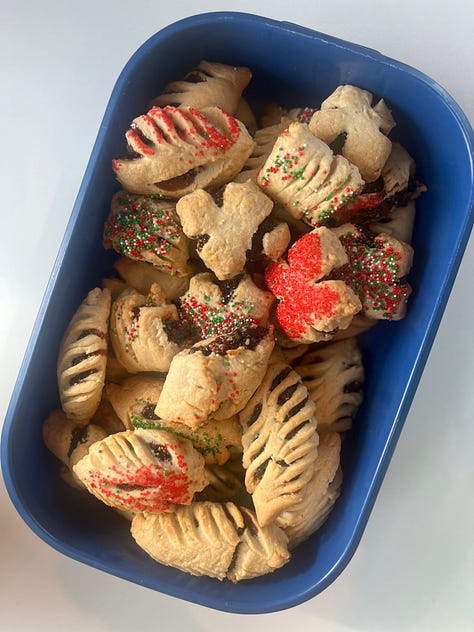
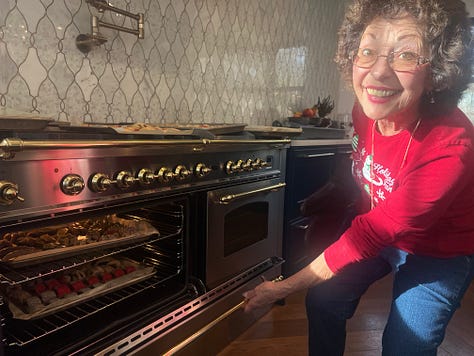
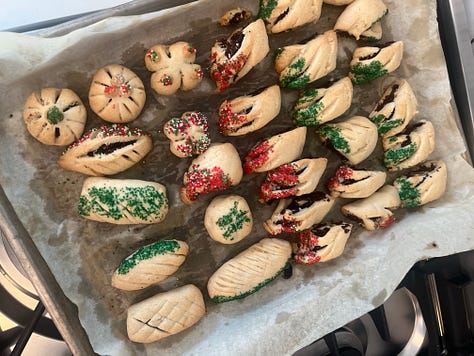
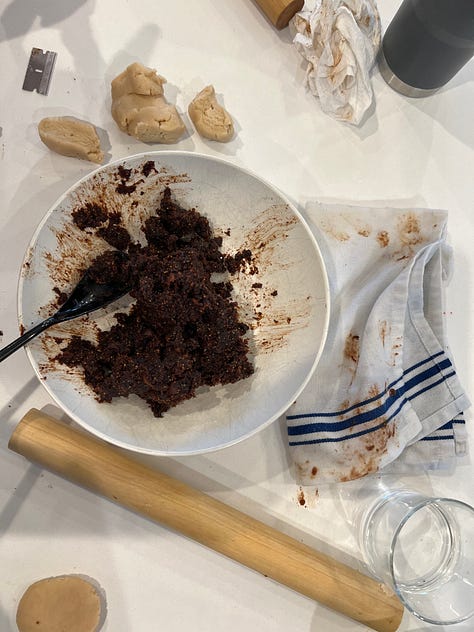
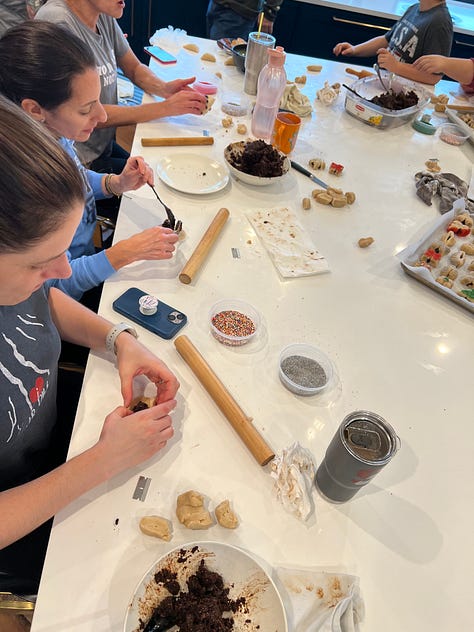
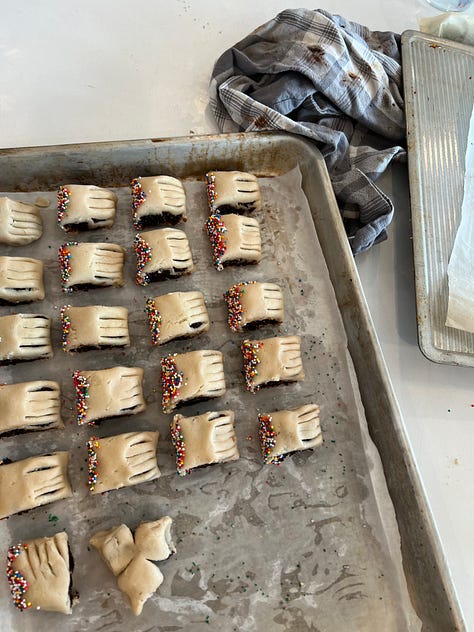
Now, nearly 75 years later, the tradition continues, in a bright modern kitchen in Yorktown Heights, where three generations of women harness their Sicilian grandmothers to make the dough from Rosa’s recipe—shortening, flour, sugar, and vanilla, no eggs or butter; and the filling from fresh figs, ground with almonds, orange peel and marmalade, chocolate chips, cloves, cinnamon, and cocoa; a marvelous combination.
Together the women roll, fill, cut, and bake hundreds of cookies. They bake for the kids, for their friends, their cousins, for their neighbors. This year, on a pretty Saturday morning the weekend after Thanksgiving, I joined them.
Dawn warned me that we would have to leave quite early and probably would be making cookies for most of the day; I picked her up at 8:30am and off we went with Camille and Eiji. On the Saw Mill Parkway, there were phone calls from cousins finding out about our ETA. We were late! How could we be late? I wondered; it was not even 9am! But when we arrived around 10am, the kitchen was already crowded with cookie-makers; we were the last to the scene. Dawn’s mom Lena and her sister Tina and sister-in-law Janet had been at it since 8am.
Around an oversized kitchen island were about two dozen women of all ages – from 9 up to late 70s, all chatting and filling, laughing and rolling, leaning into and over each other, filling trays with cookies to be sprinkled and baked.
Dawn showed me how to roll each lump of dough into a circle or oval, how to fill it, and mold the dough around the filling into different shapes—long cigars, cubes like little gift boxes, four leaf clovers, and more. Once I got the hang of it, I was a lot less nervous, and I got into a groove.
The atmosphere was warm and full of smiles and compliments, jokes and jabs. The family has an easy warmth. This is a group that is tethered; together they have shared unimaginable grief and loss, cancer and the indignities of aging, and consistent love, mostly dished out over a long table filled with food. There is a sense of communion and care in every pair of hands reaching for a rolling pin, or a spoon of fig. I felt humbled and so happy to be there.
I chatted with cousin Amy, got to know Aunt Tina, caught up with Dawn’s sisters Nicole and Danielle, and spent some time with their beautiful mom, Lena whom I first met 17 years ago at the gut wrenching funeral of her daughter Jen, who died suddenly and tragically of a brain aneurysm. “I am wearing her earrings today,” she said. “Jen loved these cookies. I always wear something of hers when we bake.”
Around 1:30 the last log of dough was finished. About 400 cookies, baked without a timer, just with a sense of smell and intuition, were cooling under the windowsill.
“This is a time we all look forward to. It’s very special to us,” Lena told me. “We want the tradition to continue not so much for the cookies, but for the time we get to spend together making memories.”
Lena’s Cucidati
For the Fig Filling
For this recipe you will need a food grinder or food processor to process the dried figs.
1 orange
1 ¼ pound dried figs
½ cup orange marmalade
1/2 cup mini semi sweet chocolate chips
1/4 cup sugar
1 teaspoon cocoa powder
1 cup almonds, whole, unsalted (roasted and coarsely chopped)
1/4 teaspoon ground cloves
1/4 teaspoon ground cinnamon
Warm water
For the dough
3 cups all purpose flour
½ cup sugar
3/4 teaspoons baking powder
1 cup (1 stick) vegetable shortening such as Crisco
2 tablespoons water (little over a cup)
Prepare the fig filling first.
Peel the orange and save the rind. (You can eat the orange sections because you won’t need them for this recipe).
Using a food grinder, process the figs and the orange rind.
Place the ground figs and rind in a large mixing bowl. Add the marmalade, chocolate chips, sugar, cocoa powder, ground almonds, clove and cinnamon. Mix all ingredients thoroughly. If the mixture is too stiff add a little bit of warm water and continue to mix until the mixture is a thick paste.
Now make the dough.
In the bowl of a stand mixer using the paddle attachment, combine the flour, sugar and baking powder. Mix on low speed to combine. With the mixer running, add the vegetable shortening in tablespoon size pieces. Continue to mix on low speed until the shortening is absorbed. With the machine running on low speed, add the water, 1 teaspoon at a time. Continue to add in more water until the dough begins to ball around the paddle. Transfer the dough to a lightly floured work surface, and knead the dough for 2 to 3 minutes until it is smooth. Cover the dough with a moist cloth.
Preheat the oven to 350 degrees.
Form the dough into 1 inch thick by 6 inch long logs. Keep any remaining dough that you are not using covered by the damp cloth. Cut each log into 1 inch thick coins.
Using a small rolling pin, roll out each coin until it is about 1/8th of an inch thick. Place a dollop of fig filling in the center of the dough, bring the two ends up and pinch them together on the top of the cookie. Use your fingers to pinch and seal the edge of the dough. Turn the cookie over so the seam is on the bottom. Using your fingers shape the cookies into an almond shape.
Transfer the cookies to a parchment paper lined cookie sheet, leaving a 1 inch space between each cookie.
With a very sharp paring knife (or a razor blade if you want to be authentic), slice vents in the side or on the top of the cookie. If you like, top some of the cookies with a small amount of sprinkles. There are no rules here. It is up to you, the baker, to make these in your own individual style.
Bake for 10 minutes, and rotate the cookie sheet. Bake an additional 8 to 10 minutes, until the cookies have a very light golden color.
Wrap in an airtight container and bring them to me!


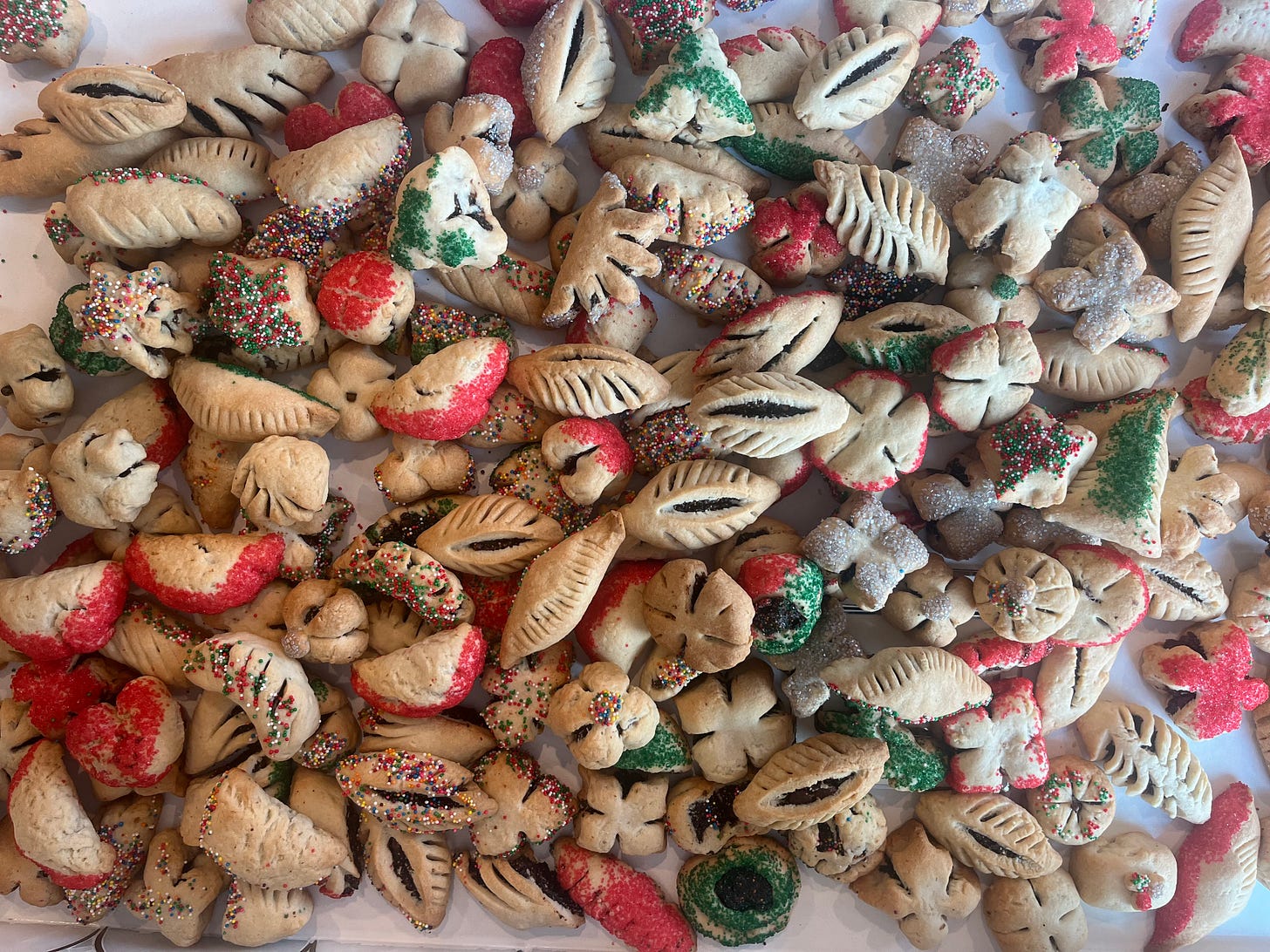
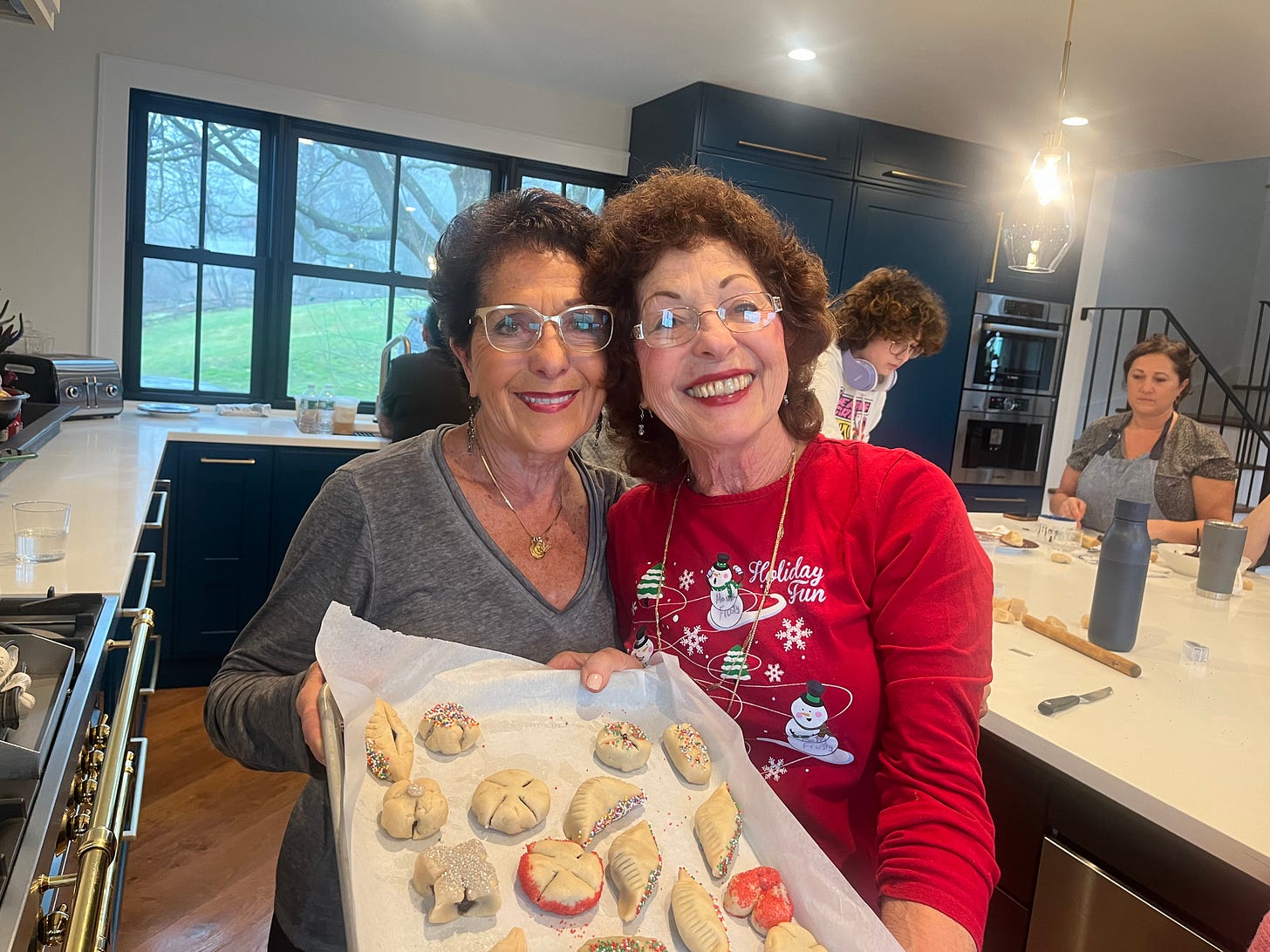
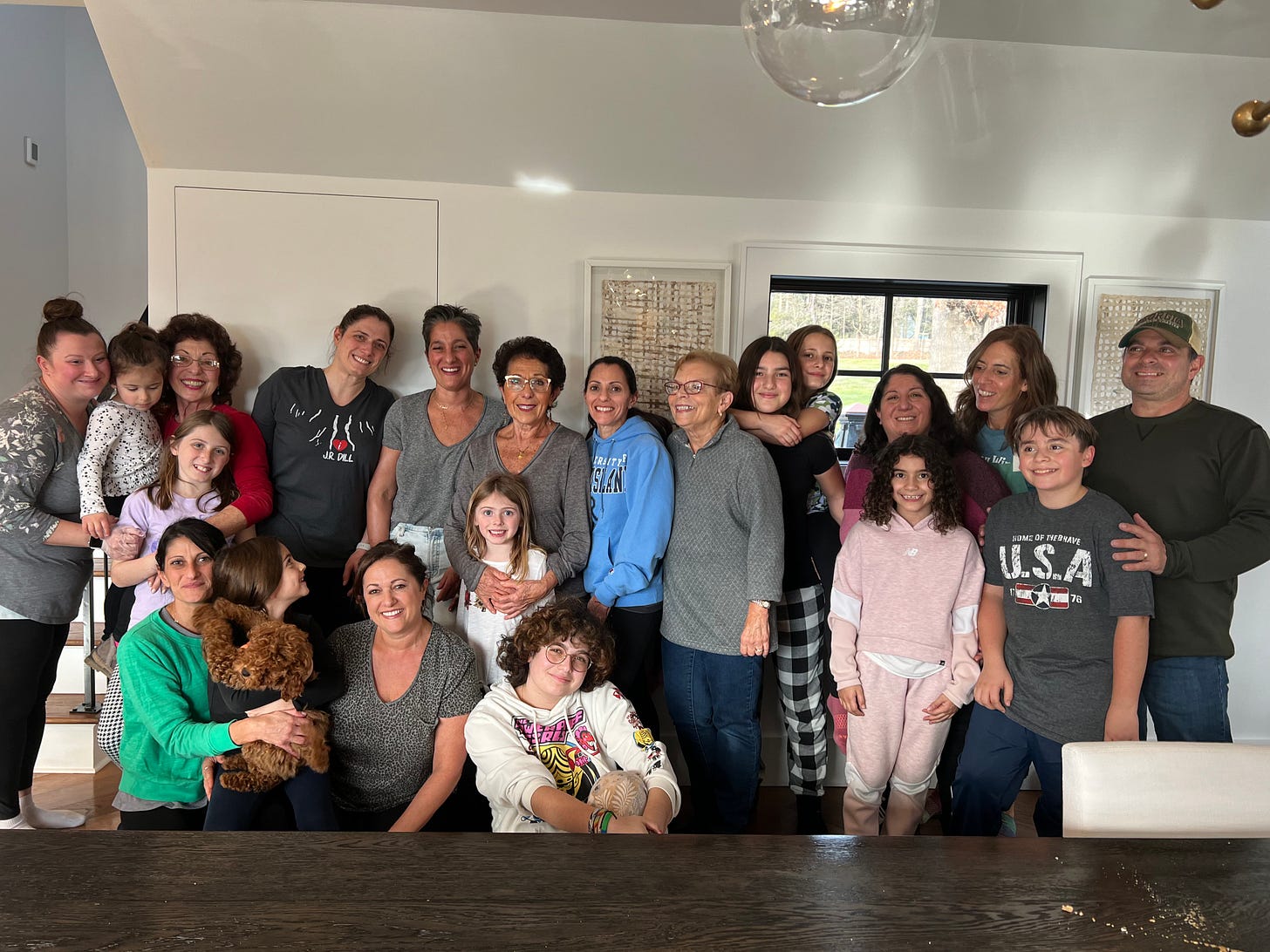
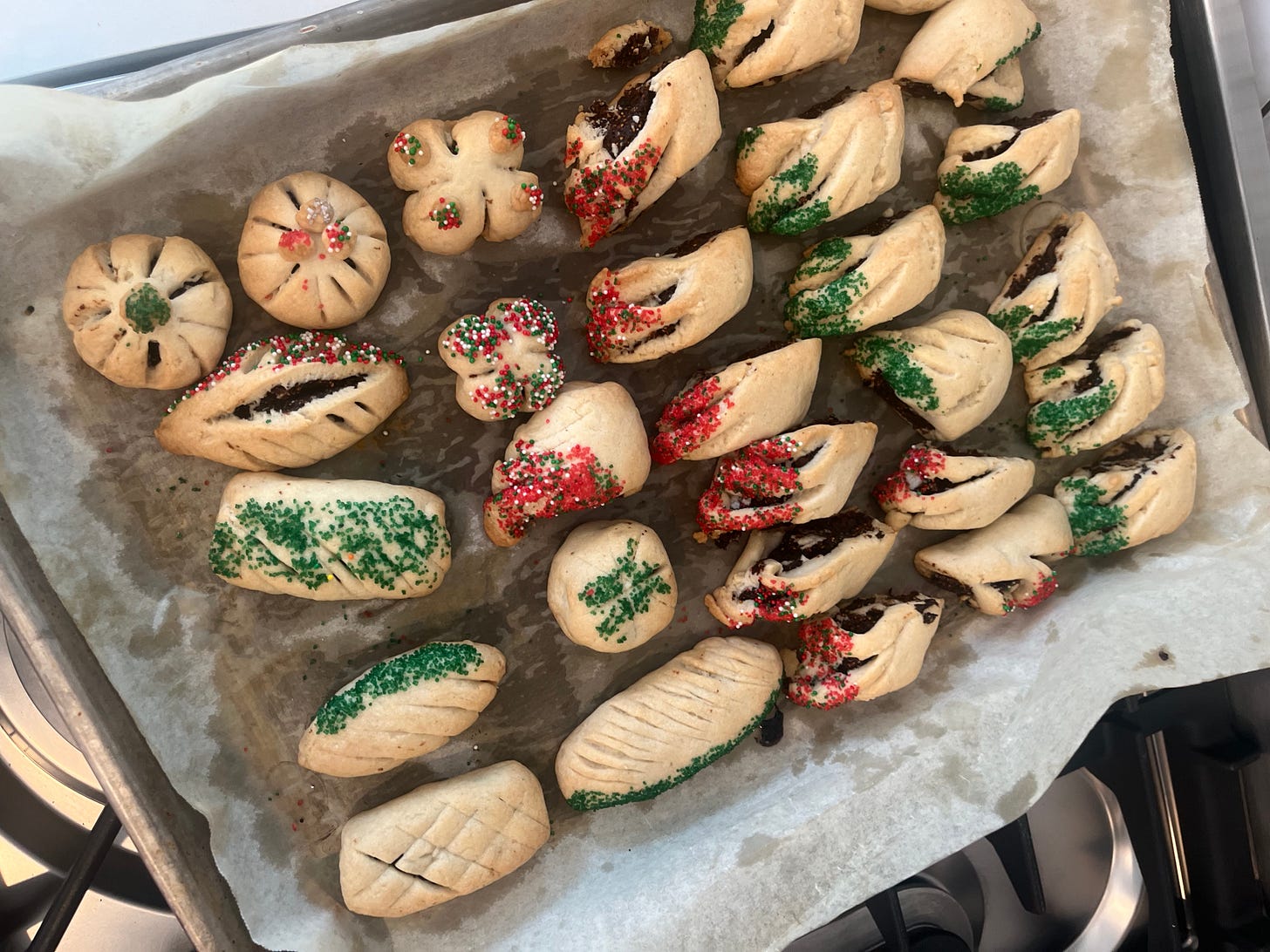
Nothing would make Mrs. Fumusa (Rosa) happier than to see that this tradition has continued. She loved her family, she loved Christmas and she would have loved your article ... just as I did!
It was so great having you and Eiji there to make these once yearly cookies!! We s add lol look forward to the cookies but even more each others company. Thank you for being here and for your beautiful words.